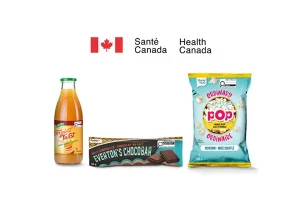As a food manufacturer, it is important to understand the rules set by the Canadian Food Inspection Agency (CFIA) for determining serving sizes on nutrition fact labels. The serving size listed on the label should reflect the amount of food people typically consume at one time and should be based on the most recent Canadian dietary guidelines. Here are the steps to follow to determine the appropriate serving size for your product:
Step 1: Identify the Reference Amount
The CFIA refers to the reference amount as the “reference quantity.” The reference quantity is the amount of food the CFIA considers to be typically consumed at one time. It is based on data from Canadian dietary surveys and represents the amount of food people typically eat in one sitting. The reference quantity is determined for each food category, such as bread, cereal, dairy, and snacks.

Step 2: Determine the Serving Size
Once you have identified the reference quantity for your food category, you can use it to determine the serving size for your specific product. The serving size should be listed in a common household measure, such as cups or tablespoons, as well as in metric units.
If your product is larger than the reference quantity, you may list the serving size as a fraction of the reference quantity. For example, if the reference quantity for your food category is 30 grams, and your product weighs 90 grams, you could list the serving size as 3 servings, or 30 grams each.
Step 3: Calculate the Nutrients
Once you have determined the serving size, you can use it to calculate the nutrient content of your product.
Step 4: Consider Additional Factors
In some cases, the serving size may need to be adjusted based on other factors, such as the packaging size or the intended use of the product. For example, if your product is intended to be used as a topping, such as croutons or grated cheese, the serving size may be smaller than the reference quantity because people typically use fewer of these products at one time.
It is also important to consider the variability of your product. If your product has a wide range of serving sizes or nutrient content, you may need to provide a range of values on the label.

Step 5: Use the CFIA Guidelines for Health Claims
If you are making a health claim on your product, such as “low fat” or “high in fibre,” you must follow the CFIA guidelines for health claims. These guidelines specify the serving size that must be used for the health claim and the nutrient content that must be met.
For example, to make a “low fat” claim, the product must contain no more than 3 grams of fat per serving. The serving size used for the claim must be based on the reference quantity for the food category, and the nutrient content must be calculated based on the serving size used for the claim.
In conclusion, determining the serving size on a nutrition fact label for food manufacturers requires following the CFIA rules for identifying the reference quantity, determining the serving size, calculating the nutrients, and considering additional factors. By accurately listing the serving size and nutrient content on your product, you can help consumers make informed choices about their diet and ensure compliance with CFIA regulations.
If you’re looking for the easiest way to create Nutrition Labels with accurate serving sizes, start a trial with MenuSano today!


















